I've baked over 18,000 pancakes. Here's how to make your best.
From preparing toppings to greasing your griddle, these are my top tips.
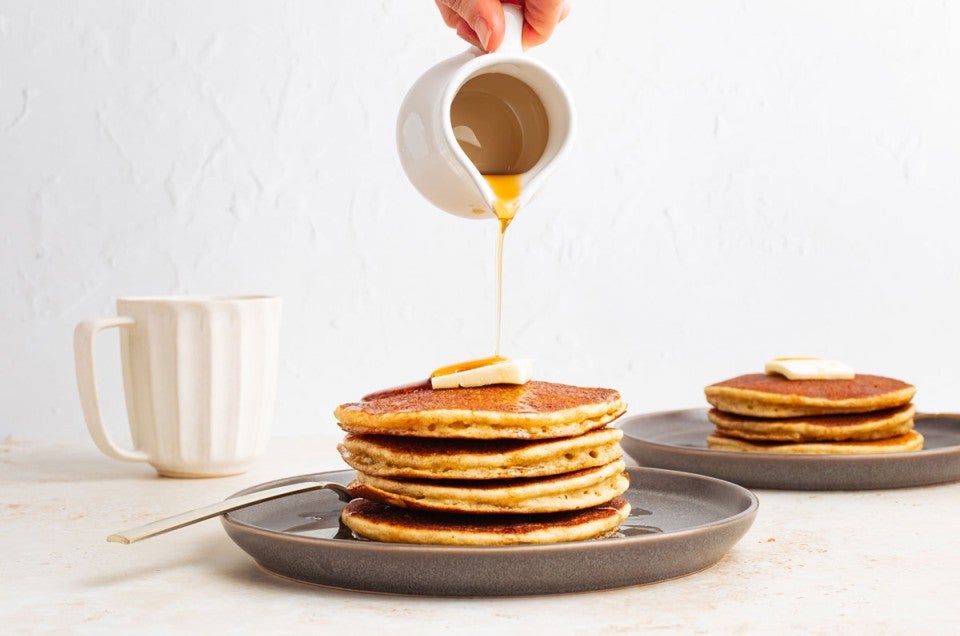

Frank Tegethoff is a veteran member of King Arthur’s research and development team. In addition to ensuring we sell the highest quality flour possible, he also helps create our many products and baking mixes.
* * *
After a lifetime of making pancakes for family and friends — and working too many buffet stations to count — I thought I was ready when the R&D team was asked to work on our new line of pancake mixes. But even with all that experience, my team and I still found ourselves spending months in the test kitchen, making pancakes every single day to perfect each of the mixes that went into the line.
Not only did we end up tasting a couple of hundred versions as we worked to finalize the flavors and texture of each mix, but we also discovered some great tips and shortcuts for making perfect pancakes along the way. So when Saturday morning comes around or an insatiable pancake craving strikes, here are some of my best tips that will make every pancake occasion even better and easier.
Fresh pancakes are the best pancakes. Make sure you don’t lose a moment of that freshness by preparing all your toppings at the beginning: the butter should be softened, the syrup (or other sauces like caramel or chocolate) already warmed, the cream whipped, the berries at room temperature, etc. These toppings should all be waiting for the arrival of the pancakes — not the other way around.
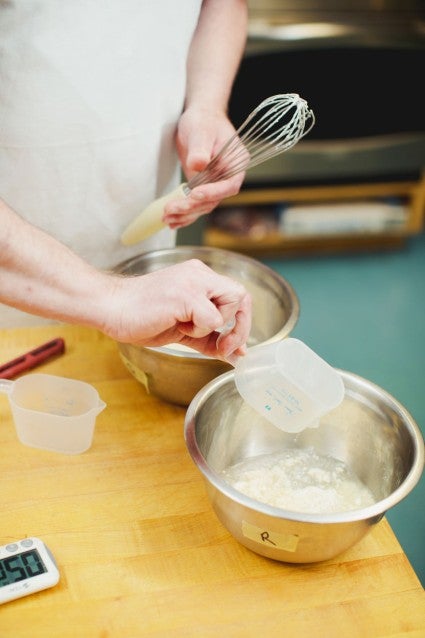
Always whisk the liquid ingredients together first, until you see bubbles begin to form. Then add the dry ingredients. This does a few important things: It emulsifies the fat and water in the batter, and it reduces over-mixing. Adding the dry ingredients on top of the wet also prevents the common issue of dry ingredients sticking to the bottom of the bowl.
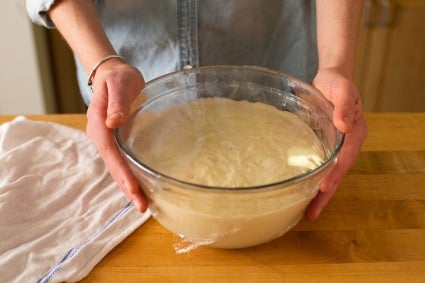
A brief rest allows the leaveners in the batter to be almost fully activated when they hit the hot griddle, which will yield the tallest and lightest pancakes possible. The directions on our pancake mixes tell bakers to let the batter sit for at least 5 minutes; in that time, you’ll notice the batter thicken. You'll know when it's ready because the batter gives a little jiggle if you tap the mixing bowl, instead of looking thin like water.
It’s important to understand that, despite their name, nonstick griddles also need oil to completely avoid any sticking. Apply the oil to the preheated griddle right before you drop the batter onto it. As I like to say, “Hot pan, cold oil, food won’t stick.” And be ready to reapply a light coating of oil between pancakes.
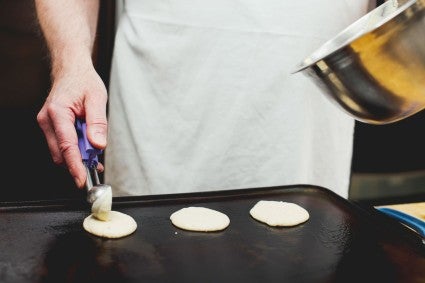
A cookie scoop is much better than a measuring cup for dropping the batter. It ensures that each pancake will be a uniform size, which takes a lot of the guesswork out of judging when to flip each one. (A muffin scoop also works for larger pancakes.)
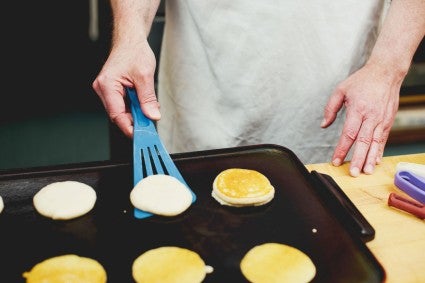
When the batter hits the hot griddle, the pancake rises and the structure of tiny bubbles sets. When you flip, the semi-fluid batter on the other side repeats the process. Have patience here — flipping early is not your friend, because you want to ensure the pancake fully rises and the structure has time to set. When you flip, the edges should be just taking on a matte appearance and the top should show broken bubbles. The pancake should be about two-thirds done cooking by the time you flip.
Thinner pancakes will stay more moist and tender if cooked a little more quickly, so turn up the heat a bit when cooking.
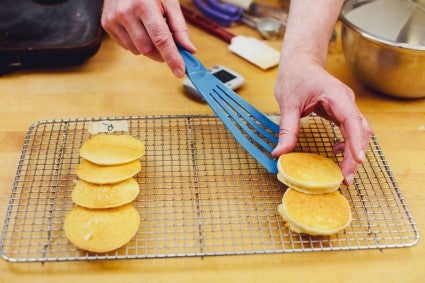
Remove pancakes to a wire rack, spaced out individually or lined up in an overlapping row “shingle-style” if you have a lot of pancakes. Place them in a low oven (about 150°F) covered with a clean towel while you wait to serve them. Spacing them out on a rack, rather than piled on top of each other in a classic stack, provides just enough air circulation to prevent them from sticking together and becoming gummy.
Pancakes (and waffles) freeze very well. Always allow the pancakes to cool completely, then place a square of parchment paper between each of the individual cakes when they go into the freezer. This keeps the pancakes from solidifying into a single frozen blob.
To put these tips to the test, try one of our many pancake recipes or our newest pancake mixes for breakfast.
Cover photo by Mary Lagier.

